Mokhtar Mohammadi
Computer Science and Engineering Department, University of Kurdistan Hewler, Erbil, Kurdistan, Iraq and Department of Information Technology, University of Human Development, Sulaymaniyah, Kurdistan, Iraq.
Enhanced Classification of Heart Sounds Using Mel Frequency Cepstral Coefficients: A Comparative Study of Single and Ensemble Classifier Strategies
Jun 02, 2024Abstract:This paper explores the efficacy of Mel Frequency Cepstral Coefficients (MFCCs) in detecting abnormal phonocardiograms using two classification strategies: a single-classifier and an ensemble-classifier approach. Phonocardiograms were segmented into S1, systole, S2, and diastole intervals, with thirteen MFCCs estimated from each segment, yielding 52 MFCCs per beat. In the single-classifier strategy, the MFCCs from nine consecutive beats were averaged to classify phonocardiograms. Conversely, the ensemble-classifier strategy employed nine classifiers to individually assess beats as normal or abnormal, with the overall classification based on the majority vote. Both methods were tested on a publicly available phonocardiogram database. Results demonstrated that the ensemble-classifier strategy achieved higher accuracy compared to the single-classifier approach, establishing MFCCs as more effective than other features, including time, time-frequency, and statistical features, evaluated in similar studies.
Evolving Deep Neural Network by Customized Moth Flame Optimization Algorithm for Underwater Targets Recognition
Feb 16, 2023Abstract:This chapter proposes using the Moth Flame Optimization (MFO) algorithm for finetuning a Deep Neural Network to recognize different underwater sonar datasets. Same as other models evolved by metaheuristic algorithms, premature convergence, trapping in local minima, and failure to converge in a reasonable time are three defects MFO confronts in solving problems with high-dimension search space. Spiral flying is the key component of the MFO as it determines how the moths adjust their positions in relation to flames; thereby, the shape of spiral motions can regulate the transition behavior between the exploration and exploitation phases. Therefore, this chapter investigates the efficiency of seven spiral motions with different curvatures and slopes in the performance of the MFO, especially for underwater target classification tasks. To assess the performance of the customized model, in addition to benchmark Sejnowski & Gorman's dataset, two experimental sonar datasets, i.e., the passive sonar and active datasets, are exploited. The results of MFO and its modifications are compared to four novel nature-inspired algorithms, including Heap-Based Optimizer (HBO), Chimp Optimization Algorithm (ChOA), Ant Lion Optimization (ALO), Stochastic Fractals Search (SFS), as well as the classic Particle Swarm Optimization (PSO). The results confirm that the customized MFO shows better performance than the other state-of-the-art models so that the classification rates are increased 1.5979, 0.9985, and 2.0879 for Sejnowski & Gorman, passive, and active datasets, respectively. The results also approve that time complexity is not significantly increased by using different spiral motions.
Current Studies and Applications of Shuffled Frog Leaping Algorithm: A Review
Jan 27, 2022Abstract:Shuffled Frog Leaping Algorithm (SFLA) is one of the most widespread algorithms. It was developed by Eusuff and Lansey in 2006. SFLA is a population-based metaheuristic algorithm that combines the benefits of memetics with particle swarm optimization. It has been used in various areas, especially in engineering problems due to its implementation easiness and limited variables. Many improvements have been made to the algorithm to alleviate its drawbacks, whether they were achieved through modifications or hybridizations with other well-known algorithms. This paper reviews the most relevant works on this algorithm. An overview of the SFLA is first conducted, followed by the algorithm's most recent modifications and hybridizations. Next, recent applications of the algorithm are discussed. Then, an operational framework of SLFA and its variants is proposed to analyze their uses on different cohorts of applications. Finally, future improvements to the algorithm are suggested. The main incentive to conduct this survey to provide useful information about the SFLA to researchers interested in working on the algorithm's enhancement or application
* 28 pages
Real-Time COVID-19 Diagnosis from X-Ray Images Using Deep CNN and Extreme Learning Machines Stabilized by Chimp Optimization Algorithm
May 14, 2021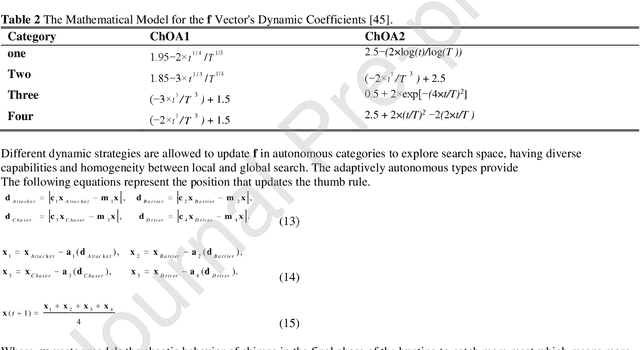
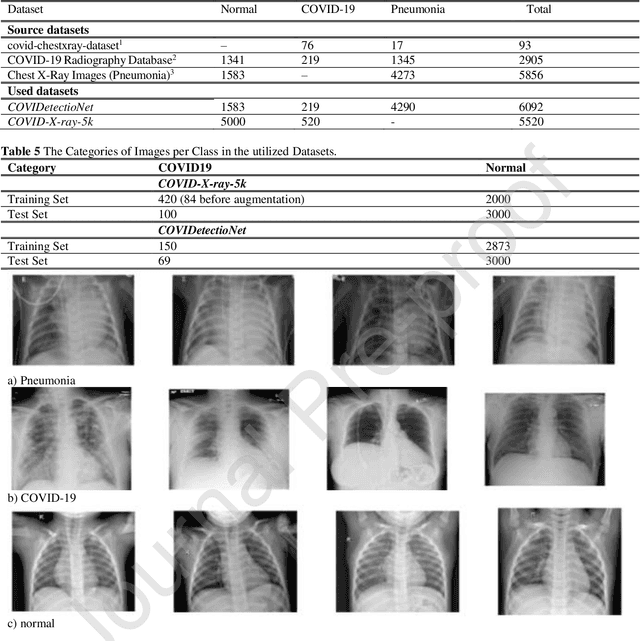
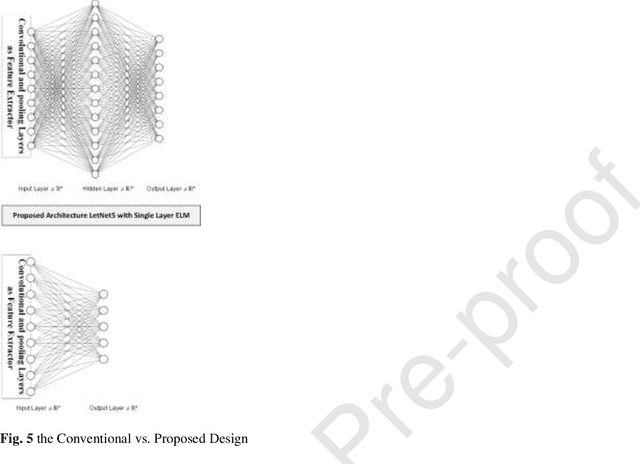
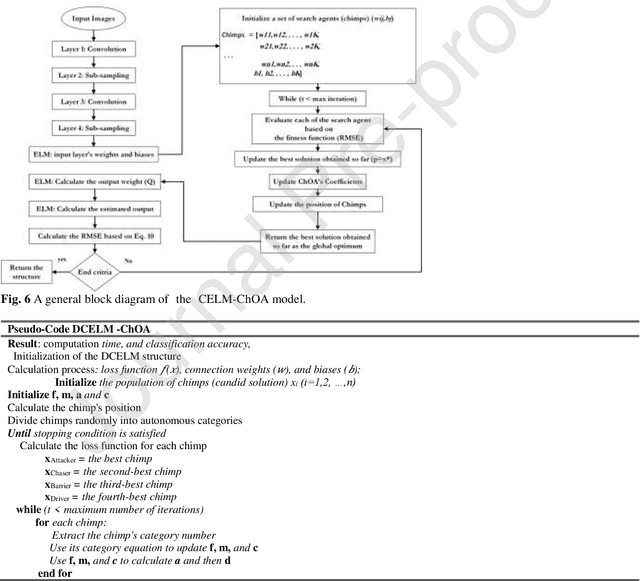
Abstract:Real-time detection of COVID-19 using radiological images has gained priority due to the increasing demand for fast diagnosis of COVID-19 cases. This paper introduces a novel two-phase approach for classifying chest X-ray images. Deep Learning (DL) methods fail to cover these aspects since training and fine-tuning the model's parameters consume much time. In this approach, the first phase comes to train a deep CNN working as a feature extractor, and the second phase comes to use Extreme Learning Machines (ELMs) for real-time detection. The main drawback of ELMs is to meet the need of a large number of hidden-layer nodes to gain a reliable and accurate detector in applying image processing since the detective performance remarkably depends on the setting of initial weights and biases. Therefore, this paper uses Chimp Optimization Algorithm (ChOA) to improve results and increase the reliability of the network while maintaining real-time capability. The designed detector is to be benchmarked on the COVID-Xray-5k and COVIDetectioNet datasets, and the results are verified by comparing it with the classic DCNN, Genetic Algorithm optimized ELM (GA-ELM), Cuckoo Search optimized ELM (CS-ELM), and Whale Optimization Algorithm optimized ELM (WOA-ELM). The proposed approach outperforms other comparative benchmarks with 98.25% and 99.11% as ultimate accuracy on the COVID-Xray-5k and COVIDetectioNet datasets, respectively, and it led relative error to reduce as the amount of 1.75% and 1.01% as compared to a convolutional CNN. More importantly, the time needed for training deep ChOA-ELM is only 0.9474 milliseconds, and the overall testing time for 3100 images is 2.937 seconds.
* 17 pages. arXiv admin note: text overlap with arXiv:2105.14192
Evolving Deep Convolutional Neural Network by Hybrid Sine-Cosine and Extreme Learning Machine for Real-time COVID19 Diagnosis from X-Ray Images
May 14, 2021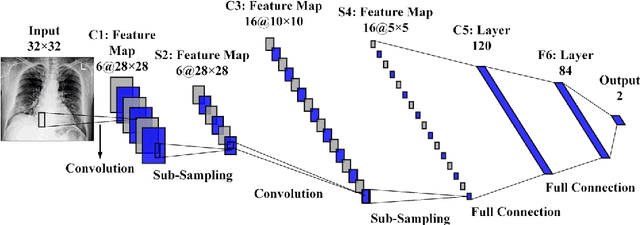

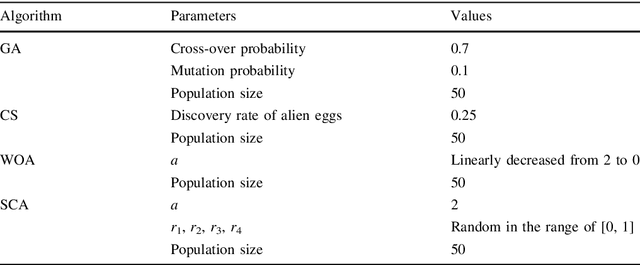
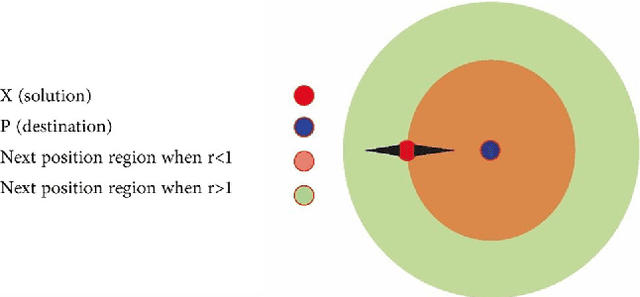
Abstract:The COVID19 pandemic globally and significantly has affected the life and health of many communities. The early detection of infected patients is effective in fighting COVID19. Using radiology (X-Ray) images is perhaps the fastest way to diagnose the patients. Thereby, deep Convolutional Neural Networks (CNNs) can be considered as applicable tools to diagnose COVID19 positive cases. Due to the complicated architecture of a deep CNN, its real-time training and testing become a challenging problem. This paper proposes using the Extreme Learning Machine (ELM) instead of the last fully connected layer to address this deficiency. However, the parameters' stochastic tuning of ELM's supervised section causes the final model unreliability. Therefore, to cope with this problem and maintain network reliability, the sine-cosine algorithm was utilized to tune the ELM's parameters. The designed network is then benchmarked on the COVID-Xray-5k dataset, and the results are verified by a comparative study with canonical deep CNN, ELM optimized by cuckoo search, ELM optimized by genetic algorithm, and ELM optimized by whale optimization algorithm. The proposed approach outperforms comparative benchmarks with a final accuracy of 98.83% on the COVID-Xray-5k dataset, leading to a relative error reduction of 2.33% compared to a canonical deep CNN. Even more critical, the designed network's training time is only 0.9421 milliseconds and the overall detection test time for 3100 images is 2.721 seconds.
An Improved Simulation Model for Pedestrian Crowd Evacuation
Dec 04, 2020



Abstract:This paper works on one of the most recent pedestrian crowd evacuation models, i.e., "a simulation model for pedestrian crowd evacuation based on various AI techniques", developed in late 2019. This study adds a new feature to the developed model by proposing a new method and integrating it with the model. This method enables the developed model to find a more appropriate evacuation area design, among others regarding safety due to selecting the best exit door location among many suggested locations. This method is completely dependent on the selected model's output, i.e., the evacuation time for each individual within the evacuation process. The new method finds an average of the evacuees' evacuation times of each exit door location; then, based on the average evacuation time, it decides which exit door location would be the best exit door to be used for evacuation by the evacuees. To validate the method, various designs for the evacuation area with various written scenarios were used. The results showed that the model with this new method could predict a proper exit door location among many suggested locations. Lastly, from the results of this research using the integration of this newly proposed method, a new capability for the selected model in terms of safety allowed the right decision in selecting the finest design for the evacuation area among other designs.
Donkey and Smuggler Optimization Algorithm: A Collaborative Working Approach to Path Finding
Apr 19, 2019



Abstract:Swarm Intelligence is a metaheuristic optimization approach that has become very predominant over the last few decades. These algorithms are inspired by animals' physical behaviors and their evolutionary perceptions. The simplicity of these algorithms allows researchers to simulate different natural phenomena to solve various real-world problems. This paper suggests a novel algorithm called Donkey and Smuggler Optimization Algorithm (DSO). The DSO is inspired by the searching behavior of donkeys. The algorithm imitates transportation behavior such as searching and selecting routes for movement by donkeys in the actual world. Two modes are established for implementing the search behavior and route-selection in this algorithm. These are the Smuggler and Donkeys. In the Smuggler mode, all the possible paths are discovered and the shortest path is then found. In the Donkeys mode, several donkey behaviors are utilized such as Run, Face & Suicide, and Face & Support. Real world data and applications are used to test the algorithm. The experimental results consisted of two parts, firstly, we used the standard benchmark test functions to evaluate the performance of the algorithm in respect to the most popular and the state of the art algorithms. Secondly, the DSO is adapted and implemented on three real-world applications namely; traveling salesman problem, packet routing, and ambulance routing. The experimental results of DSO on these real-world problems are very promising. The results exhibit that the suggested DSO is appropriate to tackle other unfamiliar search spaces and complex problems.
 Add to Chrome
Add to Chrome Add to Firefox
Add to Firefox Add to Edge
Add to Edge